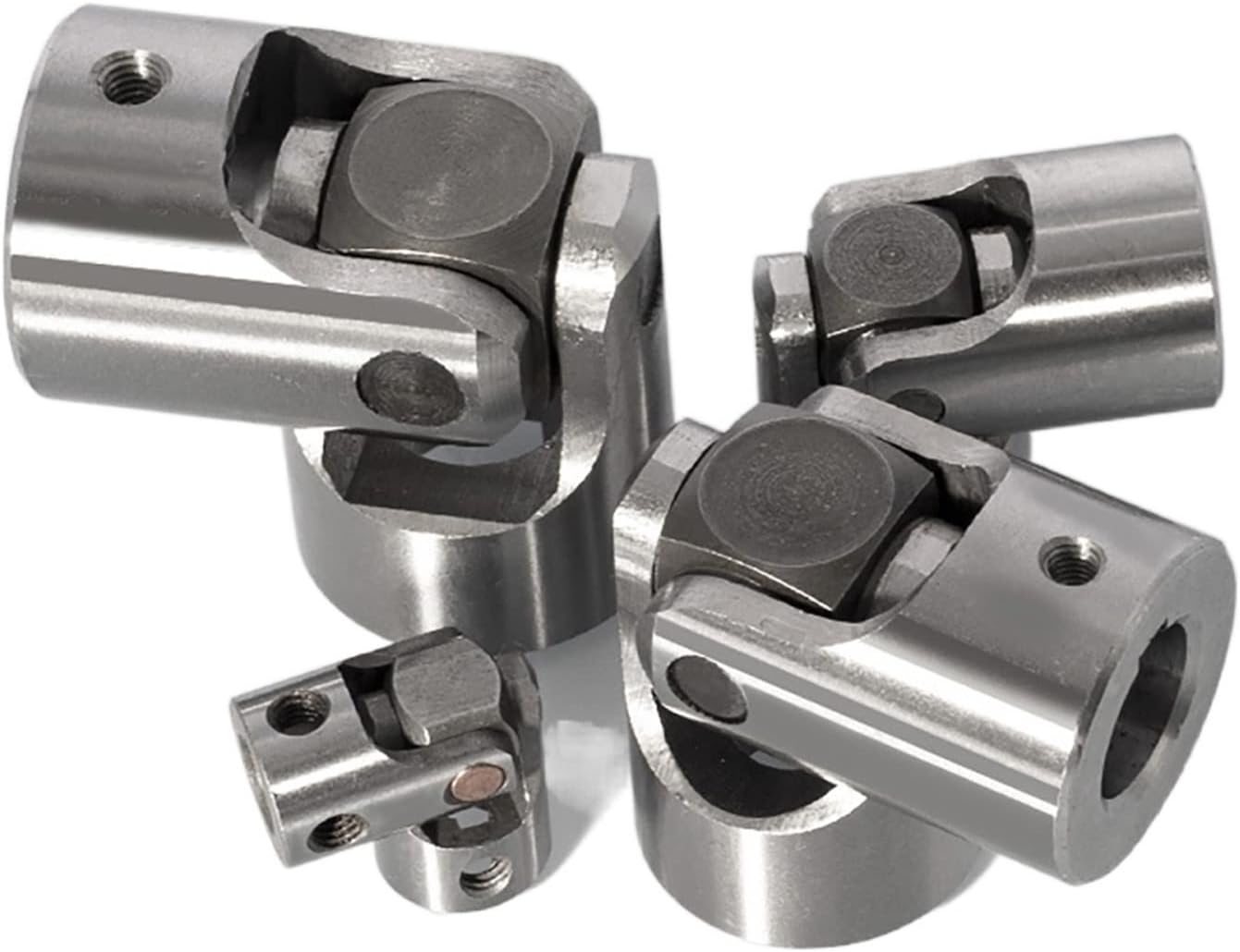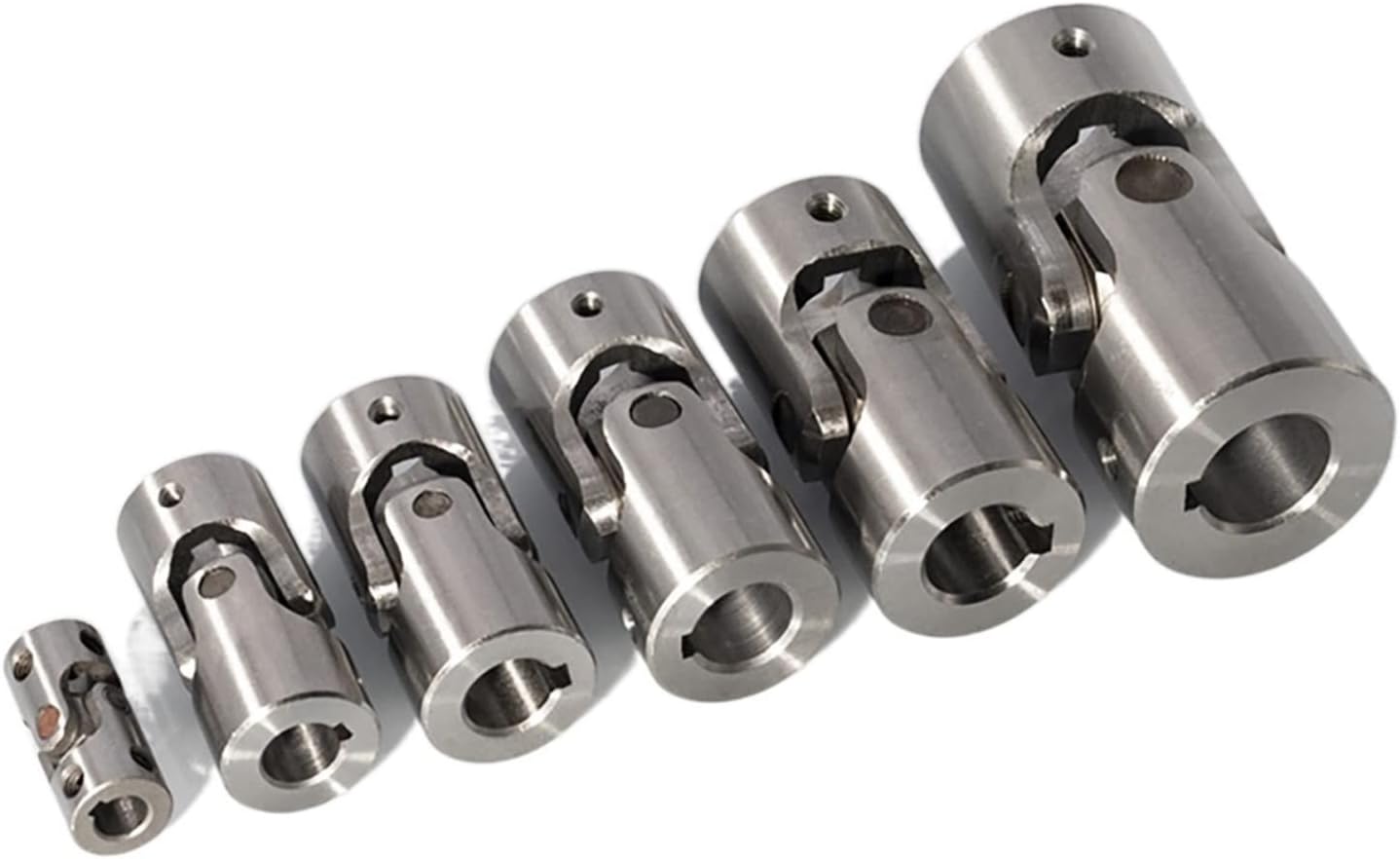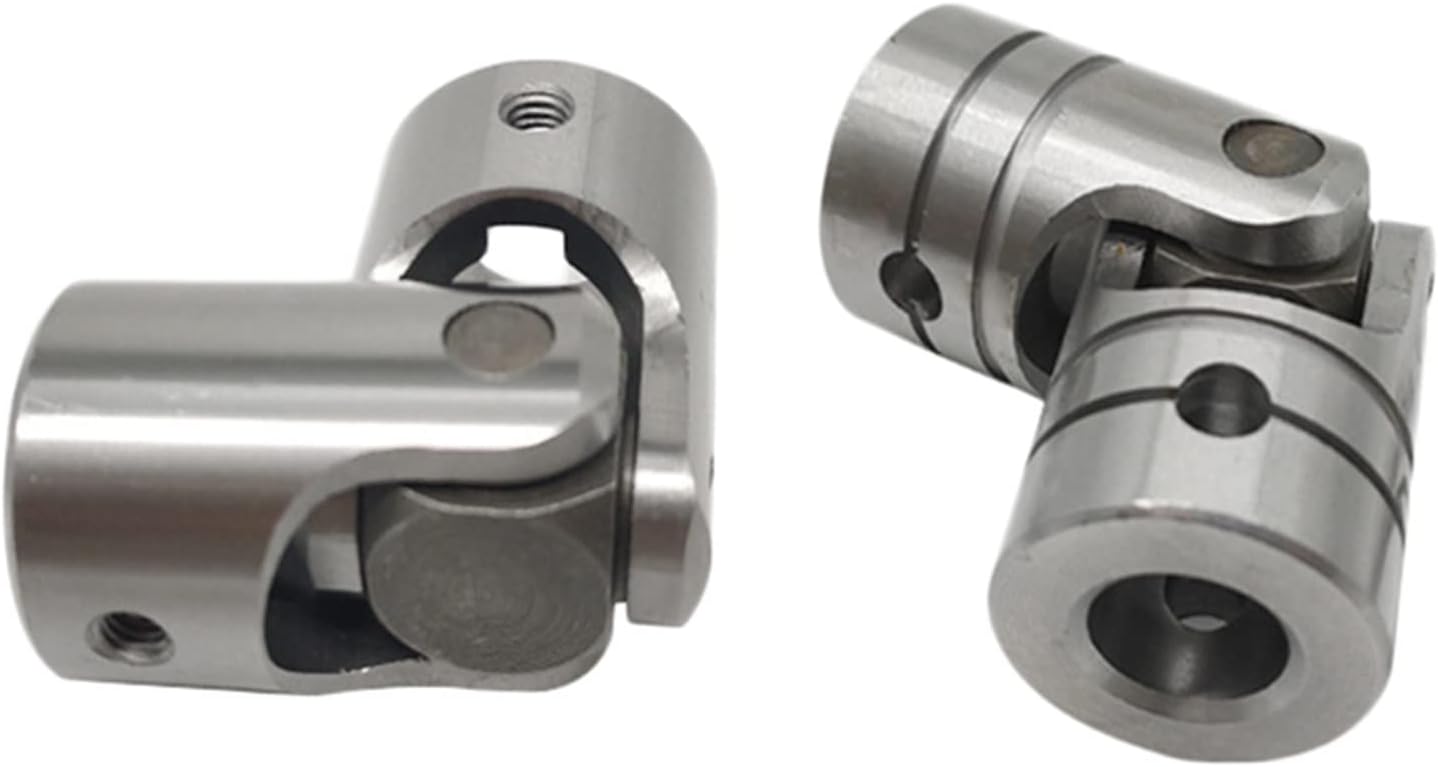Product Description
Large SWC type Cross Shaft Universal Coupling
Description
SWC-BH types Cardan shaft is a kind of the most commonly used with the characteristics of its structure can not in the same axis or axis angle or larger axial movement of 2 large equiangular continuous rotary speed, and reliably transfer torque and motion.
It can be widely used in paper machinery, metallurgy, lifting, transportation, mining, petroleum, shipbuilding, coal, rubber, and other heavy machinery industry machinery shaft in the transmission torque.
Product Parameters
| Model | Lmin | kg. m2 | |||||||||||||||||
| D/mm | Tn | T. | β/ | LS | Size | kg | |||||||||||||
| KN • m | KN • m | (.) | mm | mm | |||||||||||||||
| Di | d2 | Da | Lm | n x φ d | k | t | b | g | Lmin | 100mm | Lmin | 100mm | |||||||
| js11 | H7 | h9 | |||||||||||||||||
| SWC100BH | 100 | 2.5 | 1.25 | ≤25 | 55 | 405 | 84 | 57 | 60 | 55 | 6 x φ 9 | 7 | 2.5 | – | – | 0.0044 | 0.00019 | 6.1 | 0.35 |
| SWC120BH | 120 | 5 | 2.5 | ≤25 | 80 | 485 | 102 | 75 | 70 | 65 | 8 x φ 11 | 8 | 2.5 | – | – | 0.5719 | 0.00044 | 10.8 | 0.55 |
| SWC150BH | 150 | 10 | 5 | ≤25 | 80 | 590 | 13 | 90 | 89 | 80 | 8 x φ 13 | 10 | 3 | – | – | 0.0423 | 0.00157 | 24.5 | 0.85 |
| SWC180BH | 180 | 22.4 | 11.2 | ≤15 | 100 | 840 | 155 | 105 | 114 | 110 | 8 x φ 17 | 17 | 5 | 24 | 7 | 0.175 | 0.007 | 70 | 2.8 |
| SWC200BH | 200 | 36 | 18 | ≤15 | 110 | 860 | 170 | 120 | 127 | 115 | 8 x φ 17 | 19 | 5 | 28 | 8 | 0.31 | 0.013 | 86 | 3.6 |
| SWC225BH | 225 | 56 | 28 | ≤15 | 140 | 920 | 196 | 135 | 152 | 120 | 8 x φ 17 | 20 | 5 | 32 | 9 | 0.538 | 0.5714 | 122 | 4.9 |
| SWC250BH | 250 | 80 | 40 | ≤15 | 140 | 1035 | 218 | 150 | 168 | 140 | 8 x φ 19 | 25 | 6 | 40 | 12.5 | 0.966 | 0.5717 | 172 | 5.3 |
| SWC285BH | 285 | 120 | 58 | ≤15 | 140 | 1190 | 245 | 170 | 194 | 160 | 8 x φ 21 | 27 | 7 | 40 | 15 | 2.011 | 0.051 | 263 | 6.3 |
| SWC315BH | 315 | 160 | 80 | ≤15 | 140 | 1315 | 280 | 185 | 219 | 180 | 10 x φ 23 | 32 | 8 | 40 | 15 | 3.605 | 0.571 | 382 | 8 |
| SWC350BH | 350 | 225 | 110 | ≤15 | 150 | 1440 | 310 | 210 | 267 | 194 | 10 x φ 23 | 35 | 8 | 50 | 16 | 7.053 | 0.2219 | 582 | 15 |
| SWC390BH | 390 | 320 | 160 | ≤15 | 170 | 1590 | 345 | 235 | 267 | 215 | 10 x φ 25 | 40 | 8 | 70 | 18 | 12.164 | 0.2219 | 738 | 15 |
| SWC440BH | 440 | 500 | 250 | ≤15 | 190 | 1875 | 390 | 255 | 325 | 260 | 16 x φ 28 | 42 | 10 | 80 | 20 | 21.42 | 0.4744 | 1190 | 21.7 |
| SWC490BH | 490 | 700 | 350 | ≤15 | 190 | 1985 | 435 | 275 | 325 | 270 | 16 x φ 31 | 47 | 12 | 90 | 22.5 | 32.86 | 0.4744 | 1452 | 21.7 |
| SWC550BH | 550 | 1000 | 500 | ≤15 | 240 | 2300 | 492 | 320 | 426 | 305 | 16 x φ 31 | 50 | 12 | 100 | 22.5 | 68.92 | 1.357 | 2380 | 34 |
Packaging & Shipping
FAQ
1: Are you a trading company or a manufacturer ?
We are a professional manufacturer of couplings and universal joints.
2:Why choose Ding Jian precision transmission ?
As a professional manufacturer of coupling and universal joints, we possess a skillful team of workers and designers To provide our customers with first-class services.
3: Can You Strictly Follow The Tolerance on The Drawing And Meet The High Precision?
Yes, we can, we can provide high precision parts and make the parts as your drawing.
4:How long does it take to delivery?
Generally, it is 20-30 days if the goods are not in stock. It is according to quantity.
5:How to deal with the parts received when they are found to be in poor quality?
In case of non- conformance, please contact us immediately, we will check the problems and have them reworked or repaired at the first time. If none of these works, we support a refund.
/* January 22, 2571 19:08:37 */!function(){function s(e,r){var a,o={};try{e&&e.split(“,”).forEach(function(e,t){e&&(a=e.match(/(.*?):(.*)$/))&&1

Diagnosing and Troubleshooting Cardan Coupling Issues
Diagnosing and troubleshooting issues related to cardan couplings in machinery systems involves a systematic approach:
- Visual Inspection: Examine the cardan coupling for signs of wear, damage, misalignment, or corrosion. Look for any unusual noises or vibrations.
- Check Lubrication: Inspect the lubrication system and ensure proper lubricant levels. Inadequate lubrication can lead to premature wear.
- Monitor Performance: Use sensors and monitoring systems to track the performance of the cardan coupling in real-time. Analyze data for anomalies.
- Measure Alignment: Check for proper alignment between the input and output shafts. Misalignment can lead to increased wear and reduced efficiency.
- Check for Unusual Noises: Listen for any unusual noises during operation, such as grinding, squeaking, or knocking sounds.
- Inspect Components: Examine the individual components of the cardan coupling, including the universal joints and shafts, for signs of wear or damage.
- Perform Load Analysis: Evaluate the operating conditions and loads to ensure they are within the specified limits of the cardan coupling.
- Review Maintenance Records: Refer to maintenance records to ensure that the cardan coupling has been properly maintained and serviced.
- Consult Manufacturer Guidelines: Follow the manufacturer’s guidelines for troubleshooting and diagnostics specific to the cardan coupling model.
By following these steps, operators and maintenance personnel can effectively diagnose and troubleshoot cardan coupling issues, ensuring the reliable and efficient operation of machinery systems.

Challenges and Alignment of Cardan Couplings
Cardan couplings, while capable of accommodating angular misalignment, can pose certain challenges related to alignment. Here’s an overview of these challenges and how they can be addressed:
1. Angular Misalignment Limit: Cardan couplings have a limit to the amount of angular misalignment they can accommodate without causing excessive wear and vibration. It’s essential to stay within the manufacturer’s specified misalignment range.
2. Precision Assembly: Assembling a cardan coupling requires precision to ensure that the yokes and spider are aligned correctly. Misaligned assembly can lead to premature wear and increased vibrations.
3. Balancing and Vibration: Cardan couplings can introduce imbalances due to their design. Imbalances can result in vibration and reduce the overall efficiency of the system.
4. Lubrication: Adequate lubrication is crucial to minimize friction and wear in the bearings of the spider. Poor lubrication can lead to increased heat generation and accelerated wear.
5. Maintenance: Regular maintenance is required to monitor the condition of the coupling, including checking for wear, misalignment, and any signs of damage.
6. Torque Fluctuation: In applications with significant angular misalignment, cardan couplings may experience torque fluctuations due to the changing angles of the shafts.
To address these challenges:
– Follow the manufacturer’s guidelines for installation, alignment, and maintenance.
– Use precision tools and techniques during assembly to ensure proper alignment.
– Balance the rotating components to minimize vibration.
– Maintain proper lubrication to reduce friction and wear.
– Periodically inspect the coupling for wear, misalignment, and signs of damage.
– Consider using flexible couplings with higher misalignment capabilities for applications with extreme misalignment requirements.
Proper alignment, maintenance, and adherence to manufacturer recommendations can help maximize the efficiency and longevity of cardan couplings in mechanical systems.

What is a cardan coupling and how is it used in mechanical systems?
A cardan coupling, also known as a universal joint or U-joint coupling, is a mechanical component used to transmit torque between two shafts that are not in alignment but intersect at an angle. It consists of a cross-shaped yoke with two perpendicular shafts connected at its ends, allowing the transmission of rotational motion even when the shafts are at different angles to each other. Cardan couplings are widely used in mechanical systems to transmit torque and motion where angular misalignment is present.
Here’s how a cardan coupling works and how it is used in mechanical systems:
- Angular Misalignment: Cardan couplings are designed to accommodate angular misalignment between shafts. They can transmit torque between shafts that are at an angle to each other, typically up to 45 degrees. This ability to handle misalignment makes them suitable for various applications.
- Components: A cardan coupling consists of a cross-shaped yoke with four arms, two of which are connected to the input and output shafts. The two remaining arms are connected to each other through a bearing, which allows for the rotational motion.
- Transmitting Torque: As one shaft rotates, it imparts angular motion to the yoke. This angular motion is transferred to the other shaft through the bearing, allowing torque to be transmitted even when the shafts are not collinear.
- Application: Cardan couplings are used in various applications, including automotive drivetrains, industrial machinery, agricultural equipment, and even in some aerospace systems. They are often found in places where it’s necessary to transmit torque between non-parallel shafts while allowing for some degree of flexibility.
- Advantages: Cardan couplings are simple in design, relatively compact, and provide a cost-effective solution for transmitting torque in cases of angular misalignment. They are also capable of transmitting high torques while compensating for misalignment.
- Limitations: Cardan couplings have limitations in terms of the angle they can handle, and at extreme angles, they may produce uneven torque output due to their design. They can also introduce some degree of vibration and require periodic maintenance.
In mechanical systems, cardan couplings are used in various applications where the alignment between shafts cannot be maintained, such as in vehicles with independent suspension systems, industrial machinery with non-parallel shafts, and applications where flexibility and torque transmission are required despite angular misalignment.


editor by CX 2024-04-04